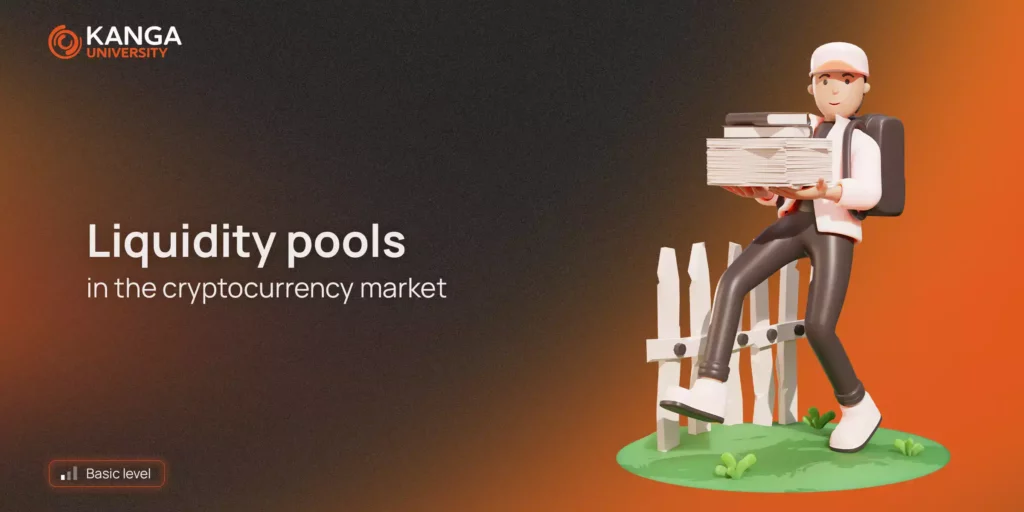

Have you ever wondered why we mention liquidity so often, talking about the crypto market? Did you know it affected our trades and the market of digital assets? In today’s lesson, we will cover this topic in detail. We invite you to read about liquidity.
Liquidity – definition
Refers to how easily we can buy or sell an asset at a stable price in a particular market. We consider the market to be liquid, when we can sell or buy assets at any time and in any amount without impacting the market price. The more often the price changes when buying/selling an asset, the less liquid the market is. That’s why we talk about it so, often liquidity and in the cryptocurrency market. It has a huge impact on prices and behaviour of investors in the market.
Liquidity in the cryptocurrency market
Okay, but why is it so important on the topic we are discussing, the crypto market? Purchase or sale of cryptocurrencies is one of the forms of investment in which we want to make a transaction at a good price. For this to be possible for us, the market we trade in must be their liquid. This affects the conclusion of transactions between investors. What does it mean? The stock exchange must have high trading activity, and bid and ask prices of cryptocurrencies and assets may not differ too much.
Liquidity it’s not just about the market of cryptocurrencies in the general sense of the word. Every single cryptocurrency we trade is also referred to by its liquidity. It is defined by several factors – from popularity to usefulness.
So – how does the market examine liquidity and its importance for investors? From previous lessons, you know that cryptocurrency exchanges keep the order books of a given market. Such a book is nothing more than a list of orders of buyers and sellers, who create the liquidity of such a market. If we need to sell or buy some tokens immediately, the book creates an order (Market) that is executed for the orders in the book’s order book.
Liquidity for the cryptocurrencies and digital assets is essential. From an investor’s perspective, you see it on three levels: the pot asset liquidity, stock exchange and market. Every transaction you make must be supported by a decision based on all three levels. In addition to technical analysis, before any investment, also consider a buy and sell strategy based on liquidity.
Liquidity in the cryptocurrency market – what does it look like?
Let’s look at this issue with an example. We will use the BTC/USDT pair on the exchange. Let’s go back to the good old days, and for our example, let’s assume that Bitcoin is worth approximately $50,500. We want to sell or buy 1 Bitcoin. On our exchange account, in the exchange interface, we see the order sheet and the last value at which BTC was bought or sold. The lowest value at which someone is willing to sell BTC at any given time is $50,345.80. At this price, we have 3.54789 BTC available. If we place a Market Buy order, it will match this bid and the last BTC/USD price will be $50,345.80. On the other side of the order book, we see that the highest price at any given time at which someone wants to buy BTC is $50,345.95. In this case, liquidity BTC/USDT is good because the volume of buy / sell orders is very decent.
However, it is not always so colourful. You may encounter a low market liquidity, which is called the spread. It occurs when the highest sale price is USD 64,543.00, and the highest bid is, for example, USD 38,456.00. The spread is the difference between the lowest ask price and the highest bid price.
You are probably now wondering how to assess whether the exchange you use is liquid. Simple. Exchanges always show their 24-hour trading volume. Often in the base currency you trade with, sometimes in the quote currency. The higher the volume, the more buyers and sellers there are on a given exchange. Additionally, the liquid exchange always has a low spread that is <0.15% and decent volume on orders that are closest to the current market price.
Fun fact: On some exchanges, you will see that they have a minimal spread and some orders at the top of the sheet. This is what we call “ghost” fluidity, and it is not true. So be careful where you place your crypto and tokens.
Benefits of liquidity on the stock exchange
- Stability – it has been known for a long time that the more liquid the market, the more stable it is.
- Invulnerability to manipulation.
- The higher liquidity of a given market and the greater number of traders affect the speed of the transaction. And also on prices of cryptocurrencies.
- Easier and more transparent technical analysis.
- More accurate charts thanks to tighter spreads and greater stability.
- Transparency and accessibility of cryptocurrencies and other digital assets.
Summary
After today’s lesson, you already understand exactly what the qualities are of the liquidity in the cryptocurrency market and how it impacts trading and asset prices. When developing your strategy, be sure to include this aspect in it. Remember that this is a very important element when making a transaction. Understanding the action liquidity will make it easier for you to invest in the market of cryptocurrencies.

